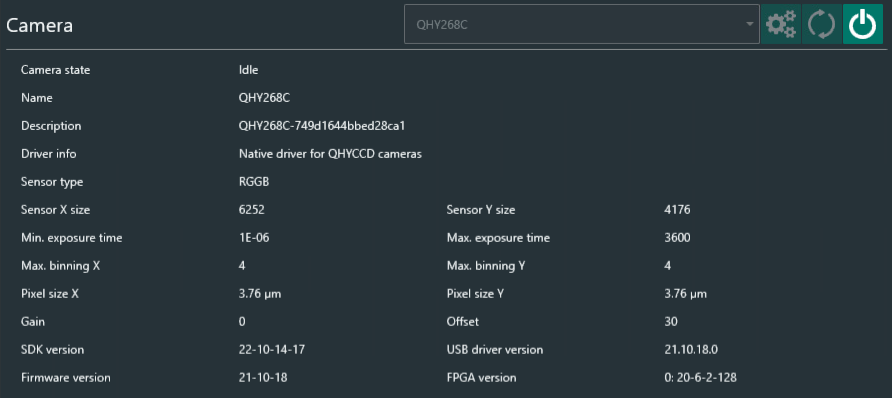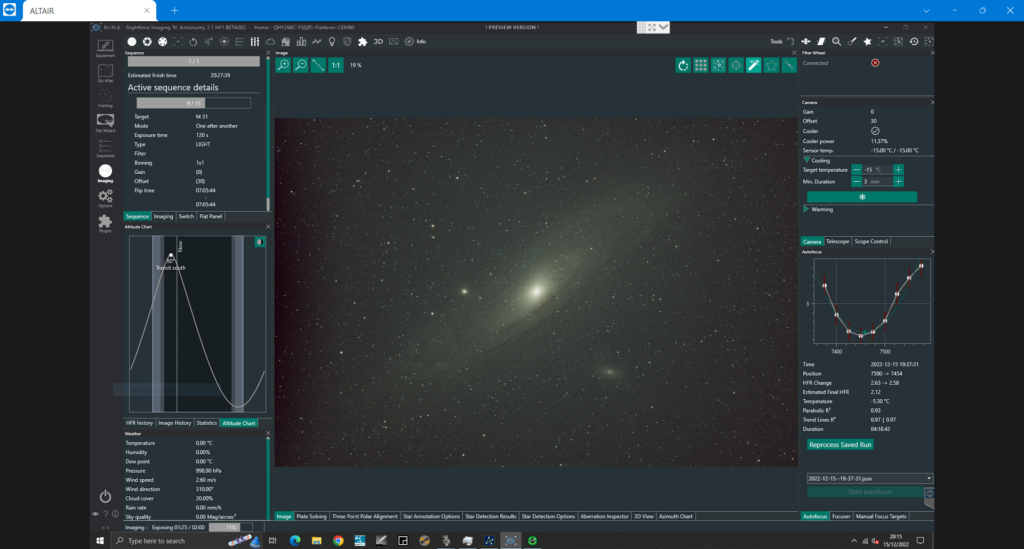As it was a work night and Dave was working I was imaging from the back garden and not the dark site. I started late in the evening and had issues sorting out the autofocus in NINA which meant I was even later than I had planned.
Using the OptoLong L-Pro filter and the native camera driver (not ASCOM) :

The target was decided by Dave as M31 (Andromeda Galaxy), I decided on 120 second exposures at -15℃, gain 0 and offset 30 (Photographic Mode). I finally started to capture data at 19:55 when M31 had already transited 45 minutes earlier.

I believe the dark shadow to the left is the QHY OAG prism, I may have to reduce it’s depth in the light path or rotate it 45 degrees so it sits on the long horizontal axis.
Once M31 had reached approximately 50 degrees altitude and was starting to set in the West my guiding started going awry especially in RA. I put this done to either balance issues or cable snagging so that’s something I need to look at in the future.
After shutting down earlier than I thought due to the guiding issue and the pending rising Moon I decided to do my darks, flats and dark flats. However my Pegasus Flatmaster refused to connect to NINA so I decided to fix and complete this task on a different day.
I only managed to capture 62 subs which totals just over 2 hours. I was hoping to get at least 6 hrs for a single session and something approaching > 12 hours which means I will need several more nights to capture my required amount of data for M31.
Not a great first outing but given I hadn’t imaged in ages this was expected. I can honestly say that although a OSC coupled with the new harmonic mounts such as the ZWO AM5/Pegasus Nyx are very convenient as part of a lightweight holiday travel setup. OSC also is easier processing but still I can say I’m not a total fan due to the loss of high frequency data, high HFR focus issues and in the case of the QHY268C the noise banding issue which although appears to be removed by darks etc still is unnerving.
Update (17/12/2022)
Have resolved my Flatmaster 120 panel issues but I feel I’m better off with a fully controllable fixed panel instead of a manual panel so I will look into that.
My Darks, Flats and Dark Flats are now done (25 of each) all performed at -15℃ to match this session temperatures but there is still not enough actual data to start processing.
